The prospect of solar-powered headphones is tantalizing. The battery life of wireless headphones has vastly improved over the years, but it still needs improvement, and these headbands are the ideal surface for a sheet of solar cells to allow constant charging.
Most headphone amplifiers provide between 10mW to 2W of power, depending on the headphones used and the amplifier's architecture.
This page explains solar-powered headphone, how it works, and a solar-powered headphone vs. a solar generator for a headphone. Based on their comparison, we recommend Jackery solar generators to power your headphones with solar energy.
What is Solar Powered Headphone
Intriguingly, the solar-powered headphones have a coating of solar-absorbing material for gathering light, which is then converted to battery electricity.
The solar charging capabilities of the headphones are often not something you need to consider actively. They will automatically charge regardless of whether they are being worn and used to listen to music or if they are turned off. The solar headphones are partly constructed from recyclable plastics and powered by light; they are self-charging and built to withstand the stresses of an active lifestyle.
How Does A Solar-Powered Headphone Work
Similar to different types of solar panels, solar-powered headphones transform light into energy and can provide almost indefinite playtime due to the sun's abundant solar energy. As you may expect, they perform better outside than indoors due to the direct sunshine.
On the surface, the concept makes a great deal of sense. Standard wireless headphones must be charged using a cable charger or a wireless charging pad; both alternatives require waiting until the headphones are fully charged before reusing.
Solving this issue are headphones powered by solar energy. Wearing these, you can go wherever you want without worrying about running out of power, providing there is sufficient illumination.

How Many Watts Does A Headphone Use
As a low-powered audio amplifier, a headphone amplifier is meant to drive headphones rather than loudspeakers in speaker enclosures. Most headphone amplifiers offer 10mW and 2W power, depending on the headphones used and the amplifier's architecture.
Headphones draw low currents from the audio source. It varies depending on the sound level; thus, if the sound level is low, such as with earbuds, the voltage is between 10mV and 20mV. If you use larger headphones with a deep bass sound on the loudest level, the power could reach up to 1500mV, which is still not considered excessive.
How Much Solar Power Does A Headphone Need
Typically, headphones, which rest on the head and cover the ears, require a louder volume. Increased loudness corresponds to increased power consumption. Therefore headphones will eat the most battery.
|
Headphones |
Watts |
Length of Use |
Solar Power Needed |
|
Average |
10mW-2W |
5-6H |
50mWh-12Wh |
|
AKG |
80mW-380mW |
5-6H |
400mWh-2280mWh |
|
Fostex |
385mW-435mW |
5-6H |
1925mWh-2610mWh |
|
Sony |
800mW-2W |
5-6H |
4000mWh-12Wh |
Jackery Solar Generators for Headphones
In this loud and crowded society, headphones have become a must. Even at home, they are usually worn whether using a computer or listening to music not to disturb neighbors. Regarding environmental impact, solar-powered headphones are more sustainable than conventional wireless headphones.
Nonetheless, the issues mentioned above with solar headphones persist. So, choosing solar generators to power headphones is more advantageous and practical, particularly the Jackery solar generators. Jackery is now a worldwide energy leader, the leading maker of outdoor solar utilities, and the most significant producer of portable electricity.
Jackery solar generators exclusively utilize sustainable, clean energy. They emit no pollutants when generating and storing energy. Your indoor and outdoor activities are powered by sustainable energy so that you can rest easy. As a result of their portability, Jackery solar generators can be brought anywhere, so you never have to worry about losing your music at home or on the move. Except for headphones, the solar generators' many connectors and outlets allow you to power multiple gadgets simultaneously.

On average, a headphone consumes between 10mW and 2W, a relatively modest wattage. Thus, any Jackery solar generator can fulfill your charging needs. Jackery Solar Generator 100 Plus, Jackery Solar Generator 240 v2, and Jackery Solar Generator 300 Plus are recommended for mobile phones, laptops, and drones.
The Jackery Solar Generator 100 Plus is an ideal solution for powering headphones, laptops, smartphones, and other small appliances on business flights. On the other hand, the Jackery Solar Generator 240 v2 is a compact solar-powered generator that can be carried to outdoor locations for charging headphones during weekend trips. If you're looking for something that is large enough to power most camping appliances, the compact yet powerful Jackery Solar Generator 300 Plus would make more sense.
|
Series |
Capacity |
Ports |
Headphone Watts |
Working Hours |
|
Jackery Solar Generator 100 Plus |
99Wh |
USB-A Output (x1): 18W Max, 5V⎓3A, 9V⎓2A, 12V⎓1.5A USB-C1+USB-C2 Output: 110W Max USB-C1/C2+USB-A Output: 118W Max USB-C1+USB-C2+USB-A Output: 128W Max USB-C1 Output: 100W Max, 4.5V⎓5A, 5V⎓3A, 5V⎓4.5A, 9V⎓3A, 12V⎓3A, 15V⎓3A, 20V⎓5A USB-C2 Output: 100W Max, 4.5V⎓5A, 5V⎓3A, 5V⎓4.5A, 9V⎓3A, 12V⎓3A, 15V⎓3A, 20V⎓5A |
Average: 10mW-2W AKG: 80mW-380mW Fostex: 385mW-435mW Sony: 800mW-2W |
Average: 42H - 8,415H AKG: 221H - 1051H Fostex: 193H - 218H Sony: 42H - 105H |
|
Jackery Solar Generator 240 v2 |
256Wh |
AC Output (x1): 120V~ 60Hz, 2.5A, 300W Rated, 600W Surge peak USB-A Output (x1): 15W Max, 5V⎓3A Max USB-C Output (x1): 15W Max, 5V⎓3A Max USB-C Output (x2): 100W Max, 5V⎓3A, 9V⎓3A, 12V⎓3A, 15V⎓3A, 20V⎓5A Car Port (x1): 12V⎓10A |
Average: 10mW-2W AKG: 80mW-380mW Fostex: 385mW-435mW Sony: 800mW-2W |
Average: 108H - 21,760H AKG: 572H - 2720H Fostex: 500H - 565H Sony: 108H - 272H |
|
Jackery Solar Generator 300 Plus |
288Wh |
AC Output (x1): 120V, 60Hz, 300W (600W Peak) USB-A Output (x1): 15W Max 5V⎓3A USB-C Output (x1): 15W Max 5V⎓3A USB-C Output (x2): 100W Max, 5V⎓3A (5V, 9V, 12V, 15V, 20V up to 5A) Car Port (x1): 12V⎓10A |
Average: 10mW-2W AKG: 80mW-380mW Fostex: 385mW-435mW Sony: 800mW-2W |
Average: 122H - 24,480H AKG: 644H - 3060H Fostex: 562H - 635H Sony: 122H - 306H |
Solar Powered Headphones VS. Solar Generator for Headphones
The solar-powered headphones serve as a figurative parachute, slowing the battery drain so they do not need to be recharged as frequently. The effectiveness of this parachute will vary greatly depending on whether you use them to listen to music at your desk or on the metro or wear them outside in a brighter region of the planet.
The headphones gained the maximum juice from solar charging when the user was inactive and sitting in the sun. You might get into the habit of leaving them on a sunny windowsill with the headband facing the sun to optimize the benefit, but if you make an effort, you could plug them in. And solar headphones can survive at least a month of regular use during the winter and even longer in sunnier weather.
Except for the solar cell-equipped headband, the solar headphones seem and work similarly to a standard pair of wireless noise-canceling headphones. The controls will be recognizable to anyone who has used wireless headphones within the past five years.
The solar-powered headphones are modeled after photosynthesis, the process by which stations convert light energy into chemical energy. When exposed to light, the Nanolayers of material generates electricity that powers the headphones. A faint indication on the side of the headband allows the wearer to determine where the brightest light is coming from.
According to most assessments, the disadvantages of solar headphones outweigh their benefits. For example, solar charging is often overlooked since an electrical outlet may also power conventional headphones. Solar headphones cannot function better or be used indoors on cloudy or wet days. As solar-powered headphones are relatively new to the market, selecting a solar generator for charging headphones is highly recommended.
|
Types |
Features |
Pros |
Cons |
|
Solar Powered Headphones |
|
|
|
|
Solar Generator for Headphones |
|
|
|
Solar Powered Headphones
Battery life is where solar-powered headphones truly stand out. The headphones have an incredible 80-hour battery life without solar charging, more significant than the competition. However, solar charging allows them to last virtually indefinitely unless you use them in a dark place.
Despite how impressive the technology is, it could be better. The largest is dependability. Not every day is sunny, so you are at the mercy of the weather. In addition, if your headphones need more juice at night, the only way to charge them is via a standard charger, which defeats the point.
Second, we know that lithium-ion batteries degrade over time but that overheating can accelerate this process. And since solar energy emits light and heat, placing your headphones directly under the sun to charge them faster will cause them to overheat and harm the battery. There needs to be more clarity between setting more quickly and maintaining battery health.
The third issue with solar-powered headphones relates to how batteries function. To maximize its overall lifespan, the ideal state for a battery is to remain as close to 50 percent as feasible for as long as possible. But, because solar-powered headphones always charge, they will be at 100% charge much more frequently, accelerating battery degeneration.
Solar Generator for Headphones
Although solar-powered headphones are a milestone in solar technology, several issues still exist with their use. Solar headphones must be utilized in direct sunshine due to the nature of solar energy. Moreover, it is less popular and more expensive than conventional headphones.

Users of solar headphones expect to continue using wall charging instead of solar charging due to their usage habits. At that time, whether they were using solar charging made no impact. Since solar-powered headphones are constantly charging, they will frequently be at 100 percent charge, resulting in accelerated battery degeneration.
The solar generator for headphones is more practical than solar-powered headphones since it also turns solar energy into electricity using limitless and clean power. A solar generator can power not only headphones but also the majority of your household equipment. The power station of a solar generator may store energy for use on cloudy or rainy days, at night, or even indoors, so there is no need to worry about using it on these occasions.
Solar generators have a range of applications. If you need to charge your headphones, phone, or laptop, or home appliances, these generators have you covered. Some even include built-in fans and lighting, making them more versatile and usable in various circumstances.
The leading solar company, Jackery, manufactures high-quality solar products and promotes clean energy to safeguard the planet. Using solar charging cables, the Jackery SolarSaga solar panels are connected to the Explorer power station to transform solar energy into electricity. The power station has many outlets and ports to power multiple gadgets simultaneously. Solar generators are the best option for charging headphones.
Regarding low-wattage headphones, we recommend Jackery Solar Generator 100 Plus, Jackery Solar Generator 240 v2, and Jackery Solar Generator 300 Plus. They are powered by solar energy and a rechargeable battery. No gasoline, hazardous emissions, or noise are produced during operation. Its small size and low weight makes it simple to carry indoors and outdoors.

Solar Powered Headphone FAQs
Here are the most frequently asked questions regarding solar-powered headphones:
1. What size of solar generator do I need to power a headphone?
It is vital to calculate the wattage of a headset and choose a solar generator of the corresponding size when deciding how to power headphones with solar energy. In general, headphones use between 10 mW and 2W. Hence, all Jackery solar generators can power headphones, allowing you to select the generator that best suits your needs.
Here's how to determine how long the Jackery solar generator will charge your headphones:
Operating time = solar generator capacity *0.85 / wattage of your headphone
Using the Jackery Solar Generator 240 v2 (256Wh capacity) to charge your headphones (2W) will require 108.8 hours (256Wh*0.85/2W).
2. Are solar-powered headphones self-charging?
The capacity for solar charging gives the alluring possibility of endless enjoyment without needing a power converter. The fundamental technological advance in headphones. Indeed, this breakthrough could improve the listening experience of headphones consumers and eliminate battery concerns for all time. Users can enjoy infinite play time if their devices are exposed to light.
3. Are solar-powered headphones worth it?
Suppose the energy conversion in solar-powered headphones is inefficient. In that case, the device will take forever to recharge, especially indoors or in overcast weather, lowering the amount of time spent listening to music.
This method must be efficient enough to prevent excruciatingly slow charging to ensure convenience. If the thin solar film on the headband ruptures or malfunctions, you are doomed. A protective layer is essential to avoid this. A solar generator may perform the same purpose as solar headphones while preserving the headphones' battery life.
Final Thoughts
Even so, solar-powered headphones are attractive for people who live in sunny climates, spend a lot of time outdoors, or are keen travelers. Several conditions must be met for solar-powered headphones to become practical, especially given their high price point. Based on the analysis, Jackery solar generators are the best option for efficiently powering headphones and other gadgets.






















































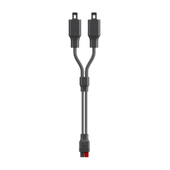














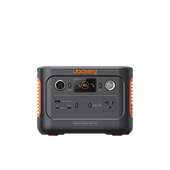

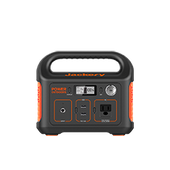

















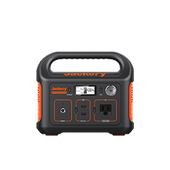

























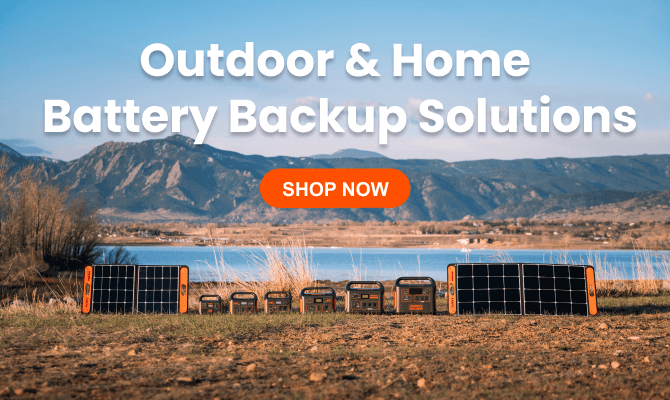
Leave a comment